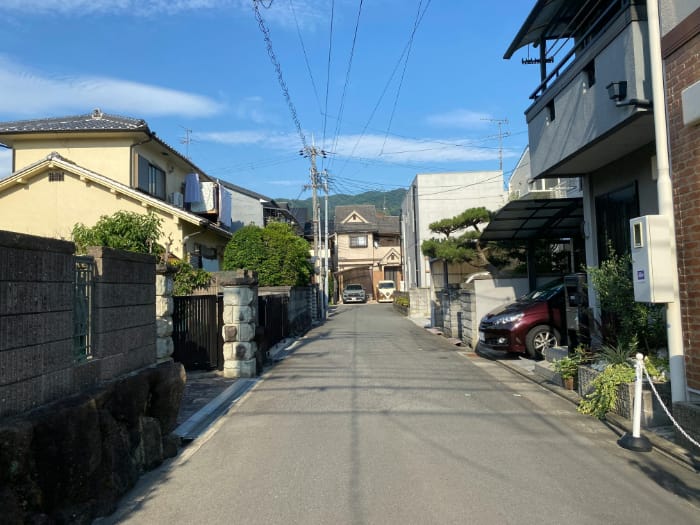- Vancity Lookout
- Posts
- City council wants to subdivide Vancouver laneway homes. Will that help home affordability?
City council wants to subdivide Vancouver laneway homes. Will that help home affordability?
Vancouver council directed staff to explore subdividing properties to sell laneway homes separately as an affordability measure. But could it fuel speculation?

Vancouver city council has directed staff to look into giving owners of lots with single-family houses and laneway houses the ability to subdivide or stratify the property with the intention of providing another opportunity for homeownership amid Vancouver’s ongoing housing crisis.
However, some are questioning whether the move will instead wind up another vehicle for investment and speculation without actually addressing the root causes of affordability in the city.
Background: Councillors Sarah Kirby-Yung and Mike Klassen brought forward the motion last week, noting more than two-fifths of single-family homes in the city are owned mortgage-free by people aged 65 and over, “many of whom are interested in downsizing, creating housing for extended family members, or wishing to age in place in their communities.”
The motion notes that the city can stratify and subdivide properties for multiplex developments, but the same opportunity isn’t available for laneway homes or accessory dwelling units, adding that it’s a policy choice not based on any technical reasoning. Klassen added at the meeting that subdividing and stratifying are available to laneway homes if the owner is doing a character house retention.
The city began allowing laneway houses in 2009, and Klassen said more than 6,000 of them have been built through the program since, with hundreds more being added per year. “It’s an extraordinarily popular program,” he told Global.
The case in favour: Several representatives of laneway home builders spoke in favour of the move to city council, including three representatives of Smallworks. Owner Luke Harrison told council that, from his experience, the units are being built largely by people downsizing from their single-family houses, often to keep generations of the same family together or to be able to age in the same area in which they have made their home.
He said the inability to subdivide or stratify the laneway house means their construction can’t be financed separately from the house, which can force owners into awkward co-ownership agreements, where both the original owners and their children, who want to move into the larger house, are both liable for the cost of the mortgage.
“This trap reduces the viability of these projects,” Harrison told council, noting young buyers can’t access financing, “without clear title” over a property.
Akua Schatz, principle and owner of Smallworks and chair of the non-profit Small Housing BC, said she was able to figure out a co-ownership agreement with her in-laws, but that because they are both on the title for their property, it has limited her in-laws’ ability to access financing. “We’re all tethered together in our financial decisions,” she said, calling subdividing and stratifying a “no-brainer.”
Bryn Davidson of Lanefab did note an objection that he has heard: the loss of rental units if they are subdivided and sold off. However, Davidson brought that up to offer his counterpoint — that “mortgage helpers” such as accessory dwelling units or laneway homes shouldn’t be our response to the rental housing shortage.
The obvious appeal: Andy Yan, director of SFU’s city program and an urban planner, told CityNews the appeal isn’t hard to miss: “Dirt.” That is, the units are ground-oriented and may have access to a yard, which can be of particular interest to families with young kids whose other options for ownership are often units in high-rise.
A bit of caution: But Yan told CTV News it’s not clear that the move will improve affordability. Proponents noted the move opens the laneway house market to even more homeowners, thereby increasing the likelihood of building more supply, with Small Housing BC executive director Tamara White telling CityNews it could “democratize the production of new housing.”
However, Yan cautioned that, rather than democratizing housing production, subdividing could draw the interest of speculators — and without appropriate cautions, could mean more properties being snatched up not by homeowners, but by investors.
“Does this create the latest and newest investment vehicle in Vancouver real estate as opposed to homes for families?” he posed to CTV.
Yan didn’t respond to a request for comment by Vancity Lookout.
Some thoughts: The idea feels more valuable as a means of keeping families together than it does as a means of increasing affordability — the need for new housing units is orders of magnitude greater than the number of new units this move is likely to spur. But this could give young families the ability to get their foot in the door for homeownership, and allow children to be close to their grandparents and reduce families’ reliance on daycares.
However, Yan does raise serious concerns about speculation — it isn’t unprecedented for programs intended to increase ownership options to become vectors for profit to the detriment of affordability. Margaret Thatcher’s sell-off of council housing in the UK in the 1980s is a prime example of that, with updated right-to-buy programs in more recent decades continuing that trend.